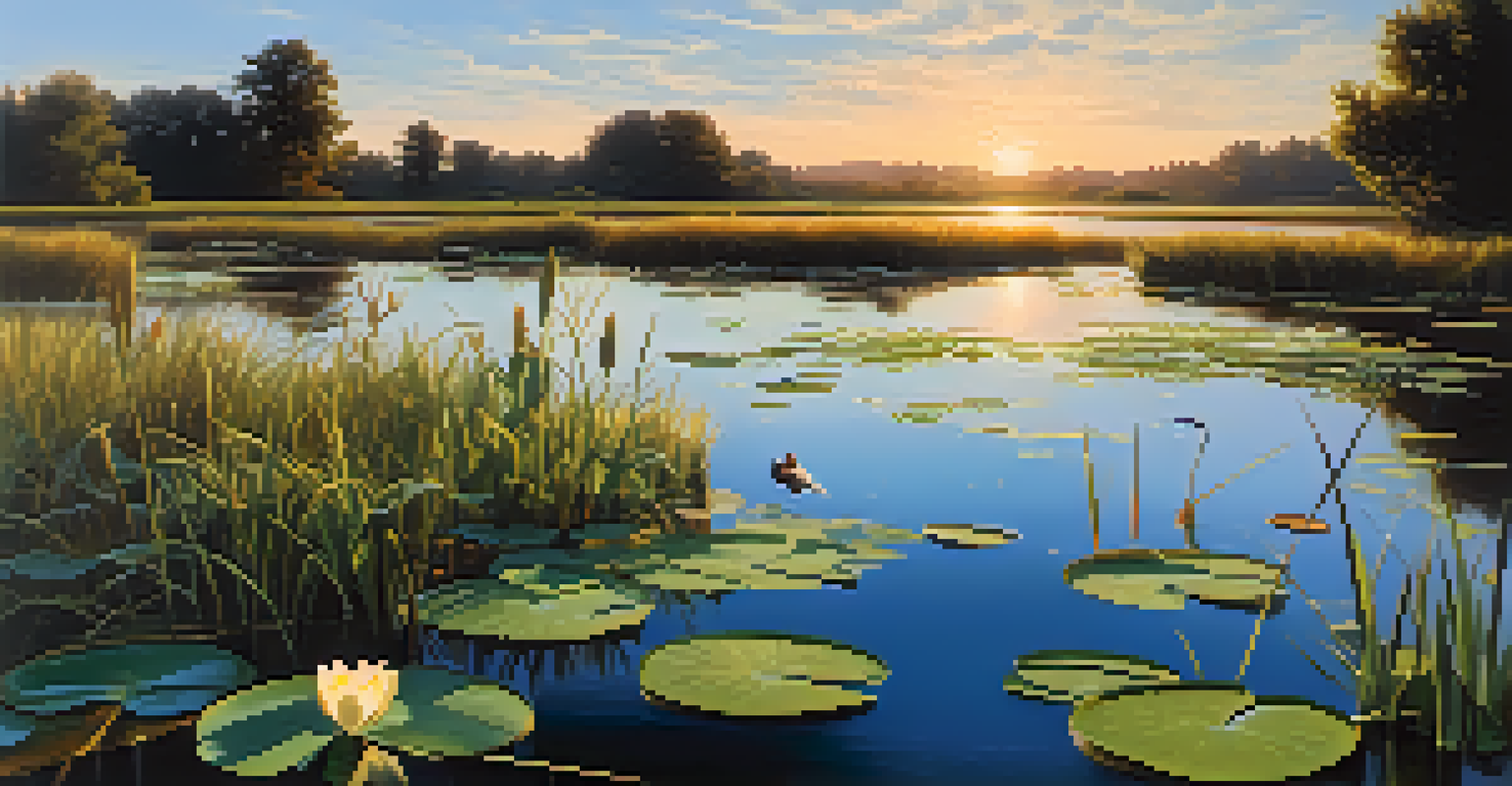The Importance of Biodiversity in Oregon's Ecosystems

Understanding Biodiversity and Its Components
Biodiversity refers to the variety of life forms in a given ecosystem, including plants, animals, fungi, and microorganisms. It encompasses the diversity within species, between species, and of ecosystems themselves. In Oregon, this richness is showcased in its diverse habitats, ranging from coastal shores to dense forests.
Biodiversity is the foundation of ecosystem services, which are essential for human survival.
Each component of biodiversity plays a unique role in maintaining ecological balance. For instance, various plant species contribute to soil health and provide food and habitat for numerous animals. This interconnectedness highlights how the loss of even one species can have ripple effects throughout the ecosystem.
Understanding biodiversity is crucial, as it helps us appreciate the complex relationships that sustain our environment. The more diverse an ecosystem, the more resilient it becomes to changes and disturbances, such as climate change or invasive species.
Biodiversity's Role in Ecosystem Services
Ecosystem services are the benefits humans derive from nature, and biodiversity is a key driver of these services. In Oregon, healthy ecosystems provide clean air and water, fertile soil, and resources like food and timber. This underscores why preserving biodiversity should be a priority for everyone.

For example, wetlands in Oregon filter pollutants from water and provide habitat for numerous species, while forests act as carbon sinks, helping mitigate climate change. This natural filtration and carbon sequestration are vital for maintaining a healthy environment.
Biodiversity Supports Ecosystem Health
Biodiversity enhances ecological balance and resilience, making ecosystems more adaptable to changes like climate change.
Moreover, biodiversity contributes to cultural and recreational services, such as tourism and outdoor activities. Oregon's stunning landscapes attract millions of visitors annually, showcasing the need for diverse ecosystems to support both nature and the economy.
The Interconnectedness of Species in Oregon
In Oregon, species interact in complex ways, forming a web of relationships that supports ecosystem health. For instance, pollinators like bees and butterflies are crucial for the reproduction of many plants. If these pollinators were to decline, it would disrupt food sources for other species, including humans.
In the end, we will conserve only what we love; we will love only what we understand; we will understand only what we are taught.
Predators, such as the Northern Spotted Owl, help keep prey populations in check, maintaining balance within the ecosystem. This balance ensures that no single species dominates, allowing for a diverse range of life to thrive.
Understanding these connections is essential for conservation efforts. By protecting one species, we often protect others, leading to a healthier, more resilient ecosystem overall.
Threats to Oregon's Biodiversity
Despite its rich biodiversity, Oregon faces several threats that jeopardize its ecosystems. Habitat loss due to urban development, agriculture, and logging is one of the most significant challenges. As natural habitats shrink, species struggle to survive, leading to declines in biodiversity.
Invasive species also pose a considerable threat, competing with native species for resources and disrupting existing ecosystems. For example, non-native plants can outcompete local flora, reducing food sources for native animals.
Threats Impacting Oregon's Biodiversity
Habitat loss, invasive species, and climate change are significant threats that jeopardize Oregon's rich biodiversity.
Climate change further exacerbates these issues, altering habitats and affecting the timing of natural events, such as migration and flowering. Addressing these threats requires a concerted effort from individuals, communities, and policymakers.
Conservation Efforts in Oregon
Recognizing the importance of biodiversity, Oregon has implemented various conservation initiatives to protect its natural resources. State and federal agencies work together to establish protected areas, such as national parks and wildlife refuges, that serve as sanctuaries for diverse species.
Community-driven efforts also play a vital role in conservation. Local organizations often engage in habitat restoration projects, invasive species removal, and educational programs to raise awareness about biodiversity's importance.
These combined efforts demonstrate that everyone can contribute to conservation, whether through volunteering, supporting local initiatives, or advocating for policies that protect Oregon's natural heritage.
The Economic Value of Biodiversity
Biodiversity is not just an environmental concern; it also has significant economic implications. Healthy ecosystems contribute billions to Oregon's economy through industries like agriculture, forestry, and tourism. For instance, the fishing industry relies on diverse aquatic ecosystems to thrive.
Moreover, biodiversity can lead to innovations in medicine and technology. Many pharmaceutical products are derived from natural sources, and preserving biodiversity allows researchers to discover new compounds that can benefit human health.
Economic Value of Biodiversity
Biodiversity contributes billions to Oregon's economy through industries like agriculture, forestry, and tourism.
Investing in biodiversity preservation is investing in economic stability. By maintaining healthy ecosystems, we ensure the sustainability of industries that rely on natural resources.
How Individuals Can Support Biodiversity
Protecting biodiversity starts at the individual level. Simple actions, such as planting native species in gardens, can provide habitats for local wildlife and support pollinators. This not only enhances your local environment but also contributes to broader conservation efforts.
Reducing waste and practicing sustainable consumption are also vital. By choosing products that are eco-friendly and supporting local businesses, individuals can lessen their impact on habitats and promote sustainable practices.

Lastly, staying informed and advocating for policies that prioritize conservation can amplify your efforts. Whether through voting, engaging in community discussions, or volunteering, every action contributes to the preservation of Oregon's rich biodiversity.